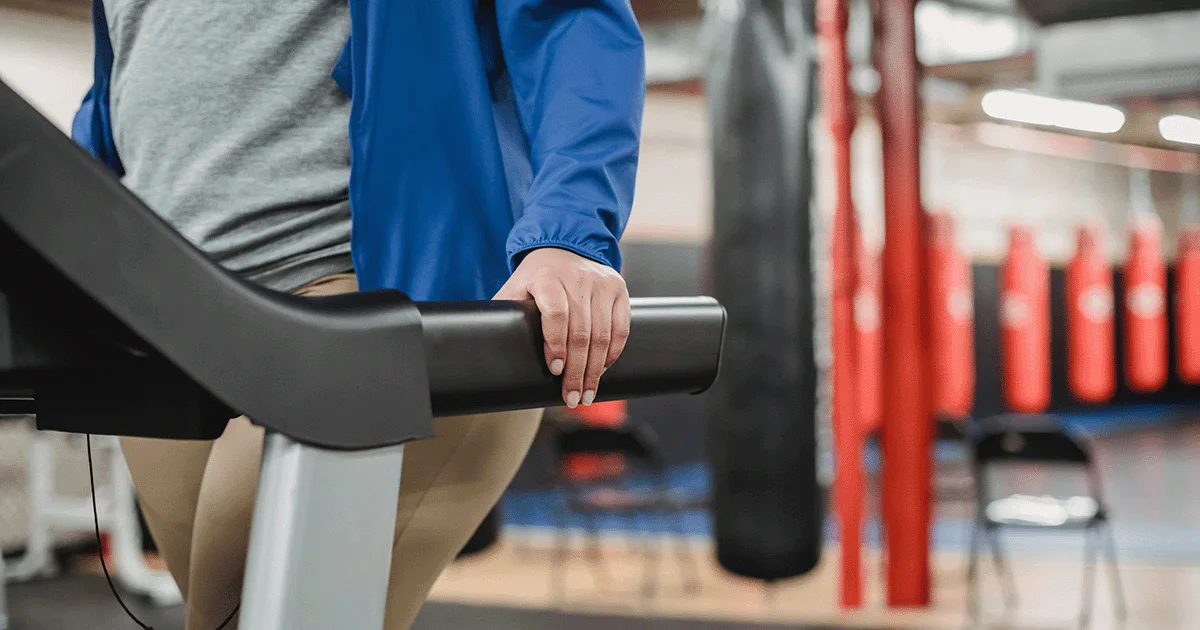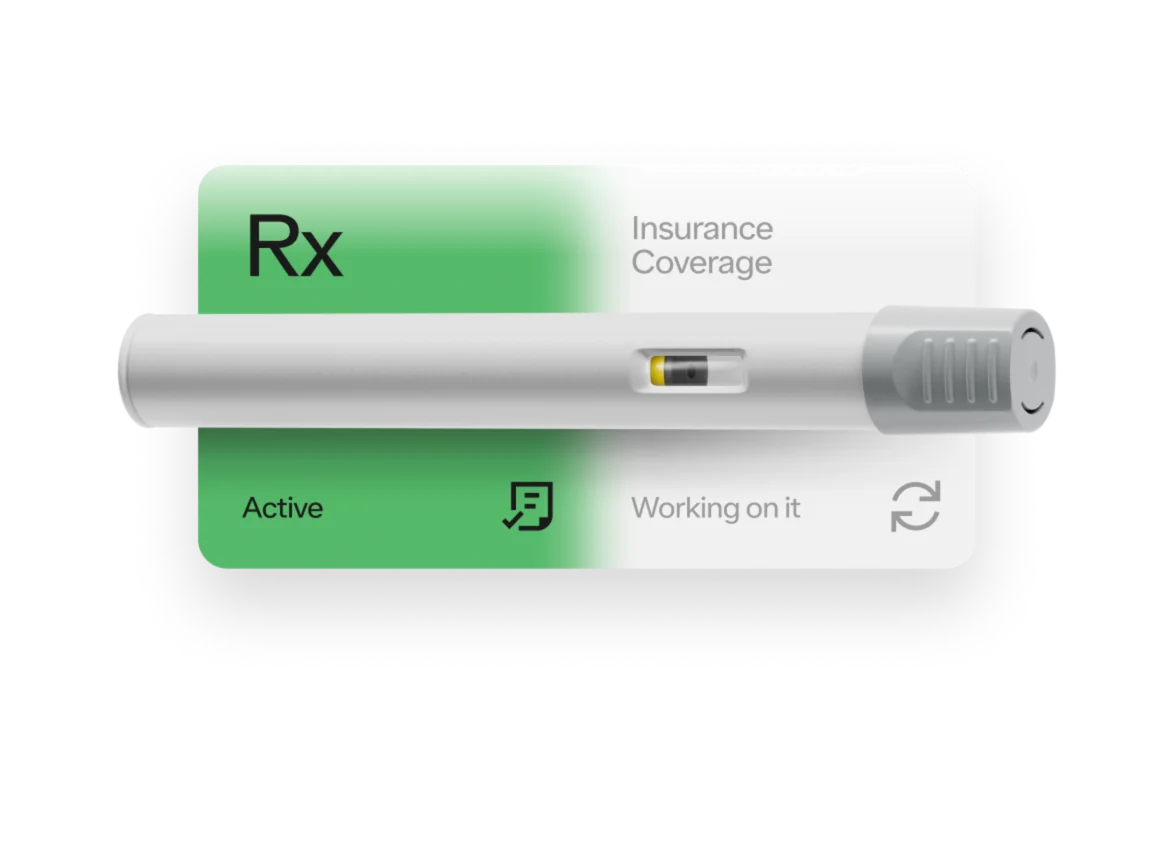Key takeaways
Microdosing GLP-1 drugs means taking smaller-than-standard doses of medications like semaglutide (Ozempic, Wegovy) or tirzepatide (Mounjaro, Zepbound).
The practice is off-label and not part of FDA-approved dosing schedules, so safety and effectiveness data are limited.
If you’re considering microdosing, it is essential to do so under close medical supervision.
Here's what we'll cover
Here's what we'll cover
Here's what we'll cover
Key takeaways
Microdosing GLP-1 drugs means taking smaller-than-standard doses of medications like semaglutide (Ozempic, Wegovy) or tirzepatide (Mounjaro, Zepbound).
The practice is off-label and not part of FDA-approved dosing schedules, so safety and effectiveness data are limited.
If you’re considering microdosing, it is essential to do so under close medical supervision.
Across social media, there’s been a growing trend of microdosing GLP-1 medications either to save money, reduce side effects, or just to lose a little bit of weight. Microdosing GLP-1s means taking smaller-than-prescribed doses of drugs like Ozempic, Wegovy (semaglutide), or tirzepatide.
The approach is off-label and not approved by the US Food and Drug Administration (FDA). It should only be done under medical supervision to ensure safety and effectiveness.
But does microdosing actually work? And is it safe? In this article, we discuss common microdosing approaches, benefits, and limitations, and whether it’s a fleeting trend or a method backed by clinical research.
Note: Ro does not offer GLP-1 microdosing treatment at this time
What does microdosing GLP-1 mean exactly?
Microdosing GLP-1 medications means taking smaller-than-standard doses of drugs like semaglutide or tirzepatide, often below the amounts used in clinical trials or official prescribing guidelines. For most, the goal is to determine whether lower doses can still aid in weight management while reducing side effects, costs, or both.
How much is a microdose of GLP-1 medications?
There’s no official medical definition for what counts as a “microdose” of a GLP-1 medication. The term originates from research and drug development, where “microdosing” was initially used to describe testing very small amounts of a drug to study its behavior in the body.
In everyday use, though, microdosing GLP-1s simply means taking a smaller amount than what’s listed in the standard dosing schedule. For example, some people may stay on their starting dose longer instead of increasing it every few weeks, while others use multidose pens to take in-between or fractional doses that aren’t part of the usual escalation plan.
What determines microdose amounts?
Several factors may shape what counts as a microdose for an individual:
Tolerance: Some people experience strong gastrointestinal side effects (nausea, bloating, diarrhea) at standard doses. A lower dose may improve tolerability.
Effectiveness: If weight loss goals are met at a lower dose, there may be no need to escalate further.
Cost and access: Microdosing can extend the use of each pen or vial, which may help when supply is limited or insurance coverage is uncertain. However, no studies have looked at extending the shelf life of GLP-1 medications. For example, Ozempic expires 8 weeks (56 days) after you open the pen — and expired semaglutide could be less effective or unsafe.
Medical history: Certain health conditions or sensitivities can make a lower dose safer.
Microdosing GLI-1s is an off-label and somewhat experimental approach that may lead to reduced effectiveness or mistakenly giving the wrong dose. It’s not a good idea to change your dose or try microdosing on your own — always follow your prescriber’s instructions.
Microdosing semaglutide (Wegovy)
Wegovy is the only FDA-approved version of semaglutide designed specifically for weight loss. It’s meant to be taken once a week on the same day each week, at any time of day, with or without food. The medication is injected under the skin, usually in the abdomen, thigh, or upper arm.
Standard vs. microdose protocols
Wegovy is designed to be increased gradually over several months, allowing your body time to adjust and helping to reduce common side effects like nausea or bloating. The standard dosing schedule is:
Weeks 1–4: 0.25 mg once weekly
Weeks 5–8: 0.5 mg once weekly
Weeks 9–12: 1.0 mg once weekly
Weeks 13–16: 1.7 mg once weekly
Maintenance dose: 2.4 mg once weekly (or 1.7 mg if advised by your provider)
So, how much is a microdose? The answer is it depends. In some cases, people and their healthcare providers may decide to stay at 0.5 mg or 1.0 mg weekly instead of increasing further. They may also guide dosing more precisely with multidose pens, where each “click” represents a very small amount of medication, but it is important to note that you cannot accurately determine dosages through clicks.
This allows for finer control during dose adjustments, but should only be done under medical supervision, since it’s considered an off-label approach and isn’t part of Wegovy’s FDA-approved dosing schedule.
Low-dose maintenance strategies
Once someone has reached their weight loss goal on a GLP-1 medication, it may not always be necessary to stay on the full dose. Some people and their healthcare providers explore a “low-dose maintenance” approach.
Early research supports this idea. In a 2025 case series, patients who took semaglutide or tirzepatide less often (every 2–4 weeks instead of weekly) were able to keep most of their weight off.
The study found that reducing the frequency of medication administration doesn’t necessarily mean losing all its benefits, suggesting this could be a practical and cost-saving long-term strategy for some individuals.
In practice, low-dose maintenance may involve continuing a smaller weekly dose or spacing injections further apart (such as every 2–4 weeks), depending on how your body responds.
Because this approach is considered off-label and hasn’t been widely studied, it’s important to do it only under medical supervision. A healthcare provider can help adjust dosing safely and ensure the medication continues to work effectively over time.
Microdosing tirzepatide (Mounjaro / Zepbound)
Tirzepatide (sold as Mounjaro for diabetes and Zepbound for obesity or sleep apnea) activates two hormones: GIP and GLP-1. They work together to help regulate blood sugar, appetite, and weight. The standard dosing schedule gradually increases the dose to help your body adapt.
Standard dosing
Tirzepatide is intended to be initiated at a low dose and gradually increased over time. This gradual schedule helps your body adjust and can reduce side effects such as nausea or stomach discomfort.
For both Mounjaro and Zepbound:
Weeks 1–4: 2.5 mg once weekly
After week 4: Increase the dose by 2.5 mg every 4 weeks or as directed: 5.0 mg → 7.5 mg → 10 mg → 12.5 mg → 15 mg, as tolerated
Maintenance dose (Zepbound): 5.0 mg, 10 mg, or 15 mg once weekly
Maximum dose: 15 mg once weekly
Your healthcare provider will typically adjust the maintenance dose based on how your body responds and your tolerance to the medication.
What we know about microdosing tirzepatide
There isn’t an official “microdosing” schedule for tirzepatide. However, some people and their healthcare providers choose to stay on the lower official doses for longer, particularly if they’re seeing good results and managing side effects well.
In a real-world study of more than 20,000 adults using tirzepatide for weight loss (without diabetes):
About 74% of people stayed below 10 mg even after six prescription fills
Most used 2.5 mg to 7.5 mg weekly
On average, participants lost nearly 12% of their body weight after six months, even without reaching higher doses
These findings suggest that, for some individuals, smaller weekly doses can still be effective, especially when combined with consistent lifestyle changes.
Microdosing Ozempic
Ozempic (semaglutide) is FDA-approved for adults with type 2 diabetes, with dosing that overlaps with Wegovy (semaglutide) for weight loss. While not officially indicated for weight management, some people use lower-dose Ozempic as an off-label weight loss strategy.
The key difference is that Ozempic is designed for blood sugar control, not officially for weight loss, so dosing and insurance coverage may differ.
Standard dosing
Ozempic is injected once a week, at any time of day, with or without meals. The standard escalation schedule is:
Weeks 1–4: 0.25 mg once weekly (a starting dose that helps your body adjust but isn’t meant for blood sugar control)
Weeks 5–8: 0.5 mg once weekly, if tolerated
Weeks 9 and beyond: 1.0 mg once weekly
For people managing diabetes, doses can go up to 2.0 mg weekly, but for weight management, many stay within the 0.25–1.0 mg range.
Monitoring and dose adjustments
If you’re microdosing Ozempic, your healthcare provider will typically:
Track your weight, appetite, and side effects over time
Adjust your dose gradually based on how your body responds
Keep you at a lower dose (like 0.5 mg weekly) if it’s effective and well tolerated
Because dosing outside of the official schedule is off-label, it’s important that any adjustments happen under medical supervision.
Microdosing for weight loss: effectiveness and limitations
Most of what we know about microdosing for weight loss comes from real-world reports, smaller studies, and clinical practice observations:
Potential benefits of microdosing for weight loss | Limitations and unknowns |
|---|---|
Improved tolerability: Smaller doses may reduce symptoms such as nausea, vomiting, or diarrhea, allowing individuals to stay on the medication for a longer period. | Limited research: No large-scale clinical trials validate microdosing as a long-term weight management strategy. Evidence comes from smaller observational studies or extrapolations. |
Maintenance dosing: For individuals who have already achieved weight loss at higher doses, a lower dose may help maintain the results. | Unclear sustainability: While some patients may maintain weight loss on lower doses, it is unclear whether the results are as sustainable as those achieved with full-dose therapy. |
Dual action at lower doses (tirzepatide): Because tirzepatide targets both GLP-1 and GIP receptors, even lower dose ranges may still support weight reduction. | Variable effectiveness: Not everyone responds to microdosing, and some may require higher doses to achieve meaningful weight loss. |
| Off-label use: Since manufacturers do not endorse microdosing and dosing instructions aren’t included in official labeling, patients need close supervision to avoid medication errors. Extending use beyond the manufacturer’s labeled expiration date or storage limit may be unsafe. |
Microdosing GLP-1 drugs may help some people tolerate treatment better, reduce costs, or prolong their supply. But the trade-off is that results may be less predictable and may not be safe, especially if it’s not done under the guidance of a healthcare professional. It’s true that smaller doses of semaglutide or tirzepatide can still lead to meaningful weight loss for some.
However, microdosing remains off-label, unproven, and not officially recommended. Other considerations for this experimental approach include:
Drug expiration: GLP-1 injections have strict storage requirements and limited stability after opening them. Using lower or less frequent doses may mean that the medication will expire before you can use it all. Be sure to check the expiration date before each use.
Needles: You may run out of needles sooner than usual. That’s a problem because you should always use a new needle for each injection. Ozempic, for example, only comes with four or six pen needles. Ask your prescriber or pharmacist for more — a box of pen needles can be dispensed or sold separately.
Who may consider GLP-1 microdosing (and who shouldn’t)?
Microdosing may be beneficial for some individuals, but not for everyone. It’s typically used in specific situations where smaller, more gradual doses can make treatment easier to manage. You might be a good fit if any of these apply to you:
You’re switching between GLP-1 medications: If you’re moving from one GLP-1 to another (like Ozempic to Wegovy or Mounjaro to Zepbound), microdosing can make that transition smoother. Taking smaller doses as you adjust helps your body adapt and may reduce side effects.
You need to increase or decrease your dose slowly: Microdosing supports careful titration, whether you’re just starting treatment and want to ramp up gradually, or tapering down after reaching your goal. It’s a way to adjust your dose safely without stopping the medication altogether.
You’ve had trouble tolerating higher doses: If standard doses cause nausea or other digestive side effects, beginning with a microdose and increasing slowly can make it easier to stay consistent with treatment and avoid stopping too soon.
You need quick or temporary dose changes: In situations such as after a hospital stay or during an acute illness, microdosing allows for small, temporary dose reductions without requiring a new prescription, helping you stay safely on track with your treatment plan.
Who should avoid microdosing GLP-1s
Microdosing isn’t right for everyone. While it can be a helpful approach for some, it also comes with risks and responsibilities that may not be comfortable for every patient. You may not be a good fit for microdosing for weight loss if:
You want fast, significant weight loss: Microdosing works gradually. If you require more rapid results, for example, due to health risks associated with obesity, standard dosing may be more effective.
You prefer clear, evidence-backed treatments. Microdosing semaglutide and similar GLP-1 drugs haven’t been formally studied in large clinical trials, and neither manufacturers nor the FDA endorse them. That means we don’t yet know how effective or safe it is long term, and results can vary from person to person.
You don’t have regular medical supervision: Microdosing should always be monitored by a clinician who can track your response, adjust doses, and spot any issues early. Trying it on your own or without follow-up can increase the risk of side effects or suboptimal results.
Hear from Ro patients
Ro members taking branded GLP-1 medications were paid for their testimonials.
Bottom line: microdosing GLP-1 drugs for weight loss
Microdosing GLP-1 medications is gaining attention as a personalized approach to using drugs like Ozempic, Wegovy, and Mounjaro, but it remains experimental. While smaller doses may offer benefits for some, they should never replace guidance from a licensed healthcare professional. Here’s what to know:
Microdosing can make treatment more tolerable: Lower doses may reduce nausea or digestive issues that often appear when increasing too quickly.
It may stretch medication further: Smaller weekly doses can lower costs or help manage shortages by extending the use of each pen or vial. But using opened Ozempic pens after the recommended 8-week shelf-life is experimental and may carry additional risks.
Results can vary widely: Some may still lose weight at lower doses, while others need full-strength treatment for noticeable progress.
It’s always off-label: Because microdosing isn’t FDA-approved or well-studied, it should only be done with professional oversight to ensure safety and consistent dosing.
Before making any changes to your dose, talk with your healthcare provider to decide what’s safe and appropriate for your situation.
Frequently asked questions (FAQs)
Is microdosing GLP-1 as effective as standard dosing for weight loss?
It depends. Microdosing GLP-1 medications may still support weight loss for some people, especially those who respond well to lower doses or can’t tolerate higher ones, but it has not been FDA-approved.
However, weight loss with GLP-1 drugs is dose-dependent, meaning higher doses generally produce greater results in clinical studies. Always discuss dosing goals and adjustments with a healthcare professional.
What's the difference between low-dose semaglutide and microdosing?
“Low dose” semaglutide means taking one of the smaller, standard doses in the official schedule, like 0.25 mg or 0.5 mg weekly.
“Microdosing” goes a step further, using a multidose device to take even smaller, customized amounts that aren’t listed on the label. It’s an off-label approach used to fine-tune dosing or reduce side effects, always under medical supervision.
Can microdosing semaglutide help with inflammation?
It’s unclear. Yes, there’s some evidence that semaglutide may help reduce inflammation in people with diabetes, likely by lowering inflammatory markers and improving insulin sensitivity; however, no studies have been conducted on microdosing.
These studies don’t specifically examine microdosing, and the exact relationship between dose size and anti-inflammatory effects remains unknown. If you’re considering semaglutide for this purpose, talk to a licensed healthcare professional to discuss whether it’s appropriate for your situation.
DISCLAIMER
If you have any medical questions or concerns, please talk to your healthcare provider. The articles on Health Guide are underpinned by peer-reviewed research and information drawn from medical societies and governmental agencies. However, they are not a substitute for professional medical advice, diagnosis, or treatment.
GLP-1 Important Safety Information: Read more about serious warnings and safety info.
Ozempic Important Safety Information: Read more about serious warnings and safety info.
Wegovy Important Safety Information: Read more about serious warnings and safety info.
Mounjaro Important Safety Information: Read more about serious warnings and safety info.
Zepbound Important Safety Information: Read more about serious warnings and safety info.
References
Ard, J., Lee, C. J., Gudzune, K., et al. (2025). Weight reduction over time in tirzepatide-treated participants by early weight loss response: Post hoc analysis in SURMOUNT-1. Diabetes, Obesity & Metabolism, 27(9), 5064–5071. doi: 10.1111/dom.16554. Retrieved from https://pubmed.ncbi.nlm.nih.gov/40677091/
Collins, L. & Costello, R. A. (2024). Glucagon-Like Peptide-1 Receptor Agonists. StatPearls. Retrieved on Oct. 7, 2025, from https://www.ncbi.nlm.nih.gov/books/NBK551568/
Hankosky, E. R., Chinthammit, C., Meeks, A., et al. (2025). Real-world use and effectiveness of tirzepatide among individuals without type 2 diabetes: Results from the Optum Market Clarity database. Diabetes, Obesity & Metabolism, 27(5), 2810–2821. doi: 10.1111/dom.16290. Retrieved from https://pmc.ncbi.nlm.nih.gov/articles/PMC11964993/
Jahagirdar, D. & Mahood, Q. (2023). Semaglutide for type 2 diabetes (2 mg): CADTH health technology review. Canadian Agency for Drugs and Technologies in Health. Retrieved on Oct. 7, 2025 from https://www.ncbi.nlm.nih.gov/books/NBK598216/
Jain, A. B., Ali, A., Gorgojo Martínez, J. J., et al. (2021). Switching between GLP-1 receptor agonists in clinical practice: Expert consensus and practical guidance. International Journal of Clinical Practice, 75(2), e13731. doi: 10.1111/ijcp.13731. Retrieved from https://pubmed.ncbi.nlm.nih.gov/32975890/
Komé, A. M., Chandran, M. M., Tungate Lopez, S. S., et al. (2025). One size does not fit all: Understanding microdosing semaglutide for diabetes in multidose pens. Diabetes Care, 48(3), e25–e27. doi: 10.2337/dc24-2575. Retrieved from https://diabetesjournals.org/care/article/48/3/e25/157716/One-Size-Does-Not-Fit-All-Understanding
Lappin, G., Noveck, R., & Burt, T. (2013). Microdosing and drug development: past, present and future. Expert Opinion On Drug Metabolism & Toxicology, 9(7), 817–834. doi: 10.1517/17425255.2013.786042. Retrieved from https://pmc.ncbi.nlm.nih.gov/articles/PMC4532546/
Mozaffarian, D., Agarwal, M., Aggarwal, M., et al. (2025). Nutritional Priorities to Support GLP-1 Therapy for Obesity: A Joint Advisory From the American College of Lifestyle Medicine, the American Society for Nutrition, the Obesity Medicine Association, and the Obesity Society. American Journal of Lifestyle Medicine, 15598276251344827. doi: 10.1177/15598276251344827 Retrieved from https://pmc.ncbi.nlm.nih.gov/articles/PMC12125019/
Nicolau, J., Blanco-Anesto, J., Bonet, A., et al. (2025). Effectiveness of Low Doses of Semaglutide on Weight Loss and Body Composition Among Women in Their Menopause. Metabolic Syndrome and Related Disorders, 23(1), 70–76. doi: 10.1089/met.2024.0124. Retrieved from https://pubmed.ncbi.nlm.nih.gov/39761057/
U.S. Food and Drug Administration (FDA-a). (2025). Highlights of prescribing information: Mounjaro (tirzepatide) injection, for subcutaneous use. Retrieved from https://www.accessdata.fda.gov/drugsatfda_docs/label/2025/215866s034lbl.pdf
U.S. Food and Drug Administration. (2025-b). Highlights of prescribing information: Ozempic (semaglutide) injection, for subcutaneous use. Retrieved from https://www.accessdata.fda.gov/drugsatfda_docs/label/2025/209637s025lbl.pdf
U.S. Food and Drug Administration. (2025-c). Highlights of prescribing information: Wegovy (semaglutide) injection, for subcutaneous use. Retrieved from https://www.accessdata.fda.gov/drugsatfda_docs/label/2025/215256s024lbl.pdf
U.S. Food and Drug Administration. (2025-d). Highlights of prescribing information: Zepbound (tirzepatide) injection, for subcutaneous use. Retrieved from https://www.accessdata.fda.gov/drugsatfda_docs/label/2025/217806s031lbl.pdf
Wu, C. C., Cengiz, A., & Lawley, S. D. (2025). Less frequent dosing of GLP-1 receptor agonists as a viable weight maintenance strategy. Obesity (Silver Spring, Md.), 33(7), 1232–1236. doi: 10.1002/oby.24302. Retrieved from https://pubmed.ncbi.nlm.nih.gov/40415172/
Yamada, Y., Katagiri, H., Hamamoto, Y., et al. (2020). Dose-response, efficacy, and safety of oral semaglutide monotherapy in Japanese patients with type 2 diabetes (PIONEER 9): a 52-week, phase 2/3a, randomised, controlled trial. The Lancet. Diabetes & Endocrinology, 8(5), 377–391. doi: 10.1016/S2213-8587(20)30075-9. Retrieved from https://pubmed.ncbi.nlm.nih.gov/32333875/
Yaribeygi, H., Maleki, M., Jamialahmadi, T., et al. (2024). Anti-inflammatory benefits of semaglutide: State of the art. Journal of Clinical & Translational Endocrinology, 36, 100340. doi: 10.1016/j.jcte.2024.100340. Retrieved from https://pmc.ncbi.nlm.nih.gov/articles/PMC10992717/













